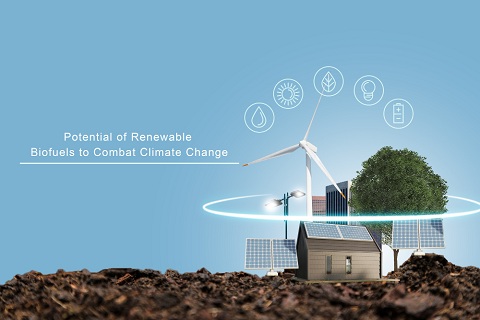In the ever-evolving landscape of wireless communication, microwave technology has emerged as a pivotal force behind the tremendous advancements we’ve witnessed in recent years. From enabling faster data transmission to enhancing the reliability of wireless networks, microwave communication has revolutionized the way we connect and communicate. In this article, we delve deep into the intricacies of microwave communication, exploring how it has shaped the present and will continue to mold the future of wireless networks.
The Evolution of Microwave Communication
Microwave communication, often referred to as microwave transmission, involves the use of electromagnetic waves with frequencies ranging from 1 GHz to 300 GHz to transmit data over long distances. This technology has come a long way since its inception, initially finding its roots in military applications and later expanding into the realms of commercial and consumer communication.
Faster Data Transmission
One of the key driving forces behind the widespread adoption of microwave communication is its ability to facilitate faster data transmission. With the ever-increasing demand for high-speed internet and seamless connectivity, microwave technology has risen to the occasion by providing a reliable means to transmit data at blazing speeds. This has paved the way for bandwidth-intensive applications, such as streaming high-definition videos, online gaming, and real-time video conferencing.
Reduced Latency
Latency, the delay between the initiation of a request and the reception of its response, is a critical factor in today’s interconnected world. Microwave communication has made significant strides in minimizing latency, thus ensuring a smoother and more responsive user experience. This is particularly crucial in applications that require real-time interaction, such as remote medical procedures, industrial automation, and autonomous vehicles.
Enhanced Reliability
Microwave communication plays a pivotal role in ensuring enhanced network reliability. Traditional wired communication systems are susceptible to physical disruptions, such as cable cuts and natural disasters. However, microwave networks are inherently more resilient, capable of bypassing geographical obstacles and swiftly restoring connectivity. This resilience makes microwave communication an ideal choice for building robust and disaster-resistant communication infrastructures.
Backbone of 5G Networks
As the world eagerly transitions to the era of 5G networks, microwave communication emerges as a critical backbone for these advanced networks. 5G technology promises ultra-fast speeds, minimal latency, and massive device connectivity. To achieve these ambitious goals, an intricate web of interconnected cells and towers is required. Microwave technology, with its high-capacity data transmission capabilities and agility in deployment, provides a cost-effective and efficient solution for establishing the backbone of 5G networks.
Challenges and Innovations
While microwave communication has undoubtedly brought about remarkable advancements, it’s important to acknowledge the challenges that come with it. Spectrum congestion is one such challenge, as the increasing number of devices vying for limited frequency bands can lead to signal interference. To tackle this, researchers and engineers are exploring innovative techniques such as beamforming and spectrum sharing to optimize spectrum utilization and mitigate congestion.
Future Prospects
Looking ahead, the future of microwave communication holds exciting prospects. Terahertz communication, utilizing frequencies between 300 GHz and 3 THz, promises even higher data rates and more extensive bandwidth. This technology has the potential to unlock new dimensions of wireless communication, enabling applications we can only dream of today.
Frequently Asked Questions (FAQs) About Microwave Communication Advancements
Microwave communication involves the use of electromagnetic waves with frequencies ranging from 1 GHz to 300 GHz to transmit data over long distances. These waves are sent between transmitting and receiving stations using specialized equipment. The data is encoded into the microwave signals, which are then transmitted and decoded at the receiving end.
Advancements in microwave communication bring several benefits to the table. Faster data transmission, reduced latency, and enhanced network reliability are some of the standout advantages. These advancements play a vital role in powering high-speed internet, seamless video conferencing, and other bandwidth-intensive applications.
Microwave communication serves as a critical backbone for 5G networks. With its ability to transmit large amounts of data quickly and reliably, microwave technology supports the dense network of small cells and towers required for 5G connectivity. This enables the ultra-fast speeds and low latency that 5G promises.
Yes, there are challenges to consider. Spectrum congestion is a notable issue, as more devices compete for limited frequency bands, leading to potential signal interference. However, researchers are actively exploring solutions like beamforming and spectrum sharing to mitigate these challenges.
The future of microwave communication is promising. Terahertz communication, operating at frequencies between 300 GHz and 3 THz, could usher in even higher data rates and more extensive bandwidth. This technology has the potential to unlock new possibilities in wireless communication and reshape various industries.
Microwave communication offers unique advantages in terms of its ability to cover long distances and bypass geographical obstacles. However, it’s essential to note that different wireless technologies serve various purposes. While microwave communication excels in providing wide coverage, technologies like millimeter-wave communication excel in delivering extremely high speeds over shorter distances.
Conclusion
Microwave communication stands as a testament to human ingenuity in the realm of wireless technology. Its contributions to faster data transmission, reduced latency, enhanced reliability, and its role in shaping the foundation of 5G networks highlight its significance. While challenges persist, ongoing innovations keep the field vibrant and full of potential. As we move forward, the evolution of microwave communication will undoubtedly continue to empower us to connect, communicate, and thrive in ways that were once unimaginable.



